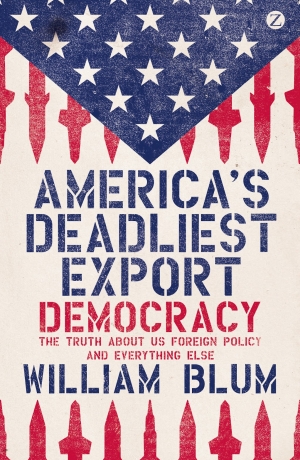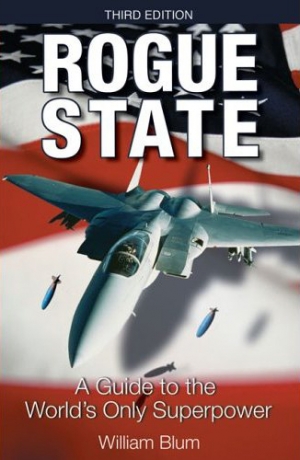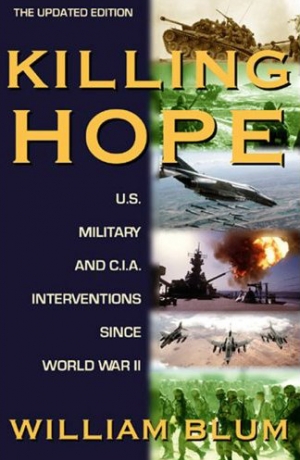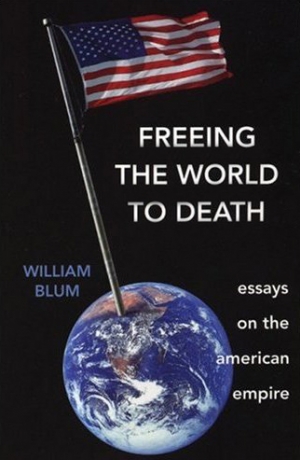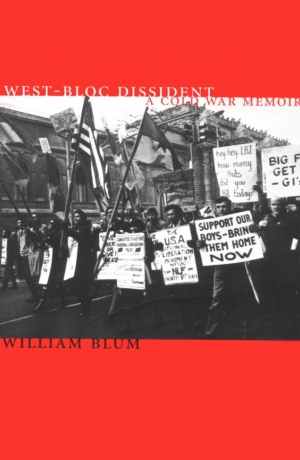Peru: Their Terrorists, Our Freedom Fighters
By William Blum
Imagine that what happened in Peru were to take place in Cuba – 14 Cuban dissidents taking over a large social gathering and holding a few hundred people hostage, including Fidel Castro’s brother Raœl and other prominent officials, as well as foreign ambassadors and businessmen. Imagine that the Cuban rebels made demands similar to those of the MRTA in Peru – raising the standard of living of the masses, bettering prison conditions, freeing a number of political prisoners, and improving the state of civil liberties.
Imagine the reaction of the American media. The MRTA “terrorists”, through an arcane ideological alchemy, would be transformed into anti-communist “freedom fighters”. The Cuban dissidents’ demands would be reported fully, seriously, and regularly. What had been seen before as an appalling, illegitimate way to achieve social change would give way effortlessly to a sincere appreciation that under intolerable conditions, desperate people can be reduced to reckless measures.
We now know that in Lima, on April 22 [1997], the Peruvian government did what it knows best, applying “brute military force as the final solution to social problems”. Peruvian commandos, under orders to take no prisoners, executed all the rebels who survived the initial onslaught. Only Peruvian President Alberto Fujimori still denies this. Two teenage girls among the rebels were heard giving themselves up as troops stormed the mansion. “We surrender! We surrender!” the girls shouted, according to an intelligence agent who monitored the raid through listening devices. They were both shot dead.
The Peruvian minister of agriculture, Rodolfo Munante, one of the hostages, disclosed that “One rebel surrendered in the room where the judges were … he told the judges he surrendered, but then a soldier entered and machine-gunned the rebels in the room.”
Munante had a further story to tell. He said he could not sleep for thinking about a young rebel who spared his life. “I’ve hardly slept. I went to bed late and was thinking all the time … I’ve remembered and remembered the attitude of that youngster.” Moments after the Peruvian troops burst into the building to rescue the hostages, one of the teenage rebels came into the room where high-ranking captives were held and pointed his rifle straight at the agriculture minister.
“I don’t know what happened,” said Munante. “I don’t know if he doubted, but I saw sadness in his eyes, maybe because of the order to kill us, or maybe because he saw his life slipping away. Then, in a matter of seconds, he turned straight around and closed the door.”
The young man, who was shot dead moments later, may have had second thoughts due to the close ties that had formed between captors and captives after 18 weeks inside the residence, said Munante. “After so many days of talking and talking an emotional bond had been established.”
“I feel a lot for the youngsters, who were humble people from the Peruvian jungle,” Jorge Gumucio, the Bolivian ambassador, who was also a hostage, said. “But we knew from the start that it was either us or them.”
It would have been a lot more of “us”, but “them” released more than 80 percent of the hostages within the first two weeks; then, as time went by, released others who had become, or claimed to be, ill; never killed a single hostage, never hurt any of them. They were rewarded by a complete refusal by Fujimori to make even the slightest concession, all the while planning their summary execution.
Imagine again that Cuba had been the stage for this tragedy. The halls of the US Congress would have been filled with operatic wails and forehead smiting over the cold-blooded execution of the freedom fighters, with Jesse Helms waving a sword and pleading to lead the invasion of Cuba. Ol’ Bill, at his heartfelt best, would have assured the families of the slain rebels: “I feel your pain!”. Flags would have flown at half-mast in Miami, and any one there who dared to question the prevailing wisdom or the prevailing emotion would risk premature death.
But inasmuch as these idealistic young people were not seeking to overthrow a socialist government, their lives have been accorded scant value in the American media. An editorial in The Washington Post remarked upon the “successful rescue in which there were amazingly small losses of life: One hostage and two attackers died.” Then, quite parenthetically: “The guerrillas, who had claimed a revolutionary cause but found few takers among Peru’s terrorism-weary population, lost all 14 of their own.” Period.
Social indoctrination is likely one reason for lack of support for the MRTA. One of the saddest sights to observe in the TV coverage of the events, was the scene of the many Peruvian soldiers celebrating their victory. These indígena-looking young men, finding in military service perhaps their only way to escape poverty, hunger and unemployment, shouting for joy, back-slapping, high-fiving, burning an MRTA flag, all because they had killed a number of other poverty-stricken young indígenas who were struggling to wrench a concession or two from the government to lighten the load of the poor and the imprisoned.
A “terrorist” – the Nazi’s term for World War II resistance fighters – fights for what he believes in; a soldier fights for what someone else believes in – in this case the wealthy coercing the poor to kill the poor to keep the wealthy in power. So it always was.
As might be expected, the commandos received training and sophisticated technological help from the United States for their operation, including overflights of the RU-38A airplane, which can photograph a building and gauge the thickness of its walls, amongst other details crucial to planning the raid.
Support of the Peruvian government in such circumstances would be regarded by Washington as the most natural and good thing in the world. In all certainty, however, if Cuba had assisted the MRTA members in any way, there would have been denunciation throughout the Americas, particularly in Washington.
And what is the nature of this Peruvian government that inspires the support of the United States? In April 1992, President Fujimori closed down the nation’s Congress and dismissed much of the judiciary, giving himself dictatorial power. Following the standard script, the United States immediately protested, announcing the suspension of all foreign aid programs to Peru. It was not long before this aid was resumed, if, in fact, it was ever actually cut off, because Washington was interested in drug interdiction in Peru, and even more so in helping the Peruvian government combat leftist and populist rebellion (as in 1965, when a force of US Green Berets was sent to Peru and, in a military operation of some size, helped to wipe out the guerrilla movements of that period.)
Indeed, the anti-drug campaign in Peru, as in Colombia, appears to have been used as a cover for the anti-guerrilla campaign. Fujimori’s chief aide and personal lawyer, Vladimiro Montesinos, has had ties to drug cartels and been accused as well of setting up death squads and being a long-time CIA asset.
The Peruvian Congress has been reinstated, but this has scarcely meant a reawakening of freedom and democracy in Peru. The latest State Department human rights report on Peru states: “Security forces were responsible for extrajudicial killings, disappearances, torture, and beatings.” Yet the White House continued to offer its unqualified support and encouragement to the Fujimori government, for its opponents were of the notorious leftist persuasion. The Cold War is alive and well. If the Soviet Union still existed, the rebel action in Peru would have been branded as part of the International Communist Conspiracy. Which conspiracy do the anti-communists blame now? Could it be that the revolutionary and “terrorist” actions of the Cold War were home grown, springing from indigenous roots?
Postscript
In May 2002, with Fujimori in exile, and a government Truth and Reconciliation Commission holding public hearings about the human rights violations of his government, arrest warrants were issued against 12 commandos who participated in the 1997 raid. The commandos were accused of executing several MRTA rebels who had surrendered. The military refused to turn over any of the commandos, saying the soldiers were only doing their duty by protecting Peru. In response to protests in support of the commandos and calls in Congress for a blanket amnesty, the warrants were revoked.
This essay first appeared in I.F. Magazine, July-August 1997. I.F. Magazine was published by noted journalist Robert Parry. The title is explained by: “In the independent tradition of George Seldes’ In Fact and I.F. Stone.”
